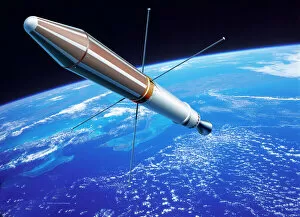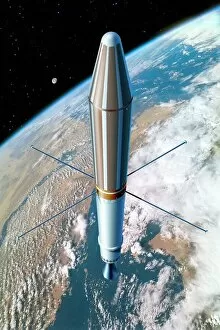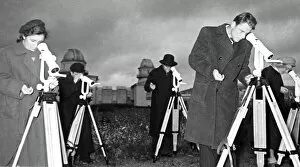Explorer 1 Collection
"Explorer 1: Unveiling the Secrets of Space" In 1958, the world witnessed a groundbreaking achievement as Explorer 1, America's first satellite
All Professionally Made to Order for Quick Shipping
"Explorer 1: Unveiling the Secrets of Space" In 1958, the world witnessed a groundbreaking achievement as Explorer 1, America's first satellite, was successfully launched into orbit. This momentous event marked a significant milestone in space exploration and opened up new frontiers for scientific discovery. Led by James Van Allen, a brilliant US astrophysicist, the Explorer 1 mission aimed to study cosmic rays and their impact on Earth's atmosphere. Equipped with state-of-the-art instruments designed by Van Allen himself, this pioneering satellite embarked on an extraordinary journey beyond our planet's boundaries. As Explorer 1 soared through the cosmos, it captured imaginations worldwide. Its sleek design and technological prowess were beautifully depicted in artwork that showcased its remarkable presence against the backdrop of infinite space. However, this historic feat did not come without challenges. In the midst of intense Cold War rivalry between superpowers, Soviet satellite monitoring posed constant threats to American endeavors. Nevertheless, Explorer 1 persevered and continued its invaluable scientific observations from above. The success also highlighted the collaborative efforts of aerospace pioneers who worked tirelessly behind the scenes to ensure its triumphant launch. These unsung heroes participated in panel discussions at NASA Kennedy Space Center alongside Michael Freilich, Director of NASA's Science Mission Directorate’s Earth Science Division; Brigadier General Wayne Monteith; and Alexander Moiseev from NASA's Goddard Spaceflight Center. Today we celebrate not only Explorer-1 but also those visionaries who dared to dream big and push humanity further into uncharted territories. Their dedication paved the way for future generations to explore our universe with curiosity and determination. As we reflect upon this monumental achievement over six decades later, let us remember how one small satellite forever changed our understanding of space and ignited a passion for exploration that continues to inspire scientists around the globe.









